Hello,
We are glad to share with you the 5th FOCUS, Skinobs’ semi-annual panel discussion dedicated to the evaluation of skin hydration. This new publication has 13 articles, 13 different perspectives.
Read the entire FOCUS#5 on flipbook: FOCUS#5 – Hydration
Read the entire FOCUS#5 : FOCUS#5 – Hydration
Studies always point out that hydration is the most sought-after claim by consumers. From the superficial layers of the epidermis, researchers gradually study the different layers of the skin by analyzing the overall hydration of the skin. Skin hydration, as the “queen” of claims, is often evaluated for a wide range of features such as aging, soothing, mechanical properties, pollution, radiance and complexion…
Moisturizing the skin is the most important thing to consider in order to maintain the proper condition of the skin. The hydration of the skin comes from the internal tissues and is influenced by the physiological conditions of the barrier function that regulates sweating. The hydrolipidic film of the stratum corneum and the physico-chemical structure of the epidermis, act as a barrier to regulate the loss of water protecting the body from external climatic stress, and internal stresses such as inflammation, hormonal changes, aging, diet …
Clinical Evaluation
There is a wide range of measuring devices allowing the in vivo objectification of skin hydration taking into account the surface, its structure, its loss of trans-epidermal water. The most well-known measuring principle uses the electrical properties of the skin to evaluate the moisturizing effect of the stratum corneum, epidermis and dermis. The probe indirectly measures either capacity, impedance or permittivity with specific characteristics to study the water content of the different layers of the skin.
The second renowned method for studyingthe hydration rate of the skin is the indirect method of insensitive waterloss, called PIE or TEWL. Useful for fatty formulations that are not easy to evaluate using the principle of impedancemetry, it is also an interesting device to assess overall skin barrier function.
Other methods of quantifying skin hydration
- Micro-topographic analysis
- Infrared spectroscopy
- Visualization of the skin surface
- Analysis of the composition of lipids and proteins
- Scoring by expert technicians and dermatologists
Hydration can be objectified using very high-tech and non-invasive methods in different ways:
- Visualization of the structure of the skin
- The molecular water content of the skin
In vitro and ex-vivo evaluation
Tests for measuring hydration properties can be implemented on several supports:
- 2D cell line, well-characterized or primary cells
- Keratinocytes derived from human iPS csis and 2D co-cultures,
- 3D Spheroids
- 3D skin models, epidermis, or dermis-epidermis,printed or not,
Here are some of the most classic biomarkers targeting the different biological mechanisms of hydration associated with aging, barrier function, inflammation, mechanical integrity or skin regeneration. Dehydration can be simulated in vitro by adding increasing percentages of salts to cells or by removing the culture medium.
These biomarkers can be quantified or visualized by different methods: gene expression, histology (morphology and imaging) proteins and metabolic assay (Elisa, Western Blot…) or other specific technologies.
- Hyaluronic acid
- Natural Moisturizing Factor [NMF]
- Aquaporins
- Glycosaminoglycans (GAG)
- CD44, differentiation cluster 44
- Caspase 14
- La Filaggrin
- Ceramides and phospholipids
- Matrix metallopeptidases (MMP)
The moisturizing efficiency of active ingredients and finished products improves the density of the dermal extracellular matrix [ECM]. This “super” matrix plays one of the essential water retention roles of the dermis with this complex network of extracellular macromolecules providing cells with structural, bioactive and biochemical support.
It is crucial to take the time with the CROs to design each protocol and to precisely define, all the parameters of the in vitro or in vivo study… You never waste time discussing these essentials. The moisturizing performance of skin care is one of the fundamental claims of personal care. Although it seems obvious to validate this property, there are many protocol options, and the choice of methods is wide and must be well documented.
Our Partners have the floor
We are glad to introduce the several topics presented by our partners:
- Multimodal Hydration by IEC
- Water measurements on the skin – C+K’s Core Expertise by C+K
- Ellead presents a total solution for skin moisturizing evaluation through in vitro and clinical test
- Assessment of Product Hydration Efficacy in Clinical Trials by PCR
- Skin Hydration measurement by Proderm
- Eurofins assesses skincare hydration for different ethnic skin groups
- Winter is coming! This means that it is the perfect time to test hydrating products or moisturizers on the skin by Evalulab
- The cornerstone of facial care by Zurko Research
- Hydration measurement by Pixience by Pixience
- Newtone solution for nomadic or in-lab follow-up of moisturization performance using skin digital imaging & 3D surface micro-relief pattern analysis
- D-Squame with “PAC and iST” techniques for skin proteomics, to characterize skin barrier function and superficial inflammation by Phylogene
- Capture water with Natural Moisturizing Factor by Rachida Nachat-Kappes
- CIDP has developed ex vivo and in vivo methodologies to determine the efficacy of moisturizing products
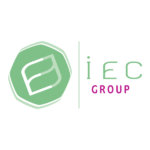
Multimodal Hydration by IEC
Jean-Robert CAMPOS | Scientific Director
Contact: jr.campos@iecfrance.com
Discover IEC Group profile and instrumentation on the Preclinical and Clinical Platforms: IEC Group
Test your moisturizing products with multiple devices, in multiethnic panel under various climatic conditions
The skin, the largest organ of the human body, can exchange with its environment while protecting itself from external aggressions.
On the surface of the skin, the hydrolipidic film contributes to maintaining a protective barrier, in particular its level of hydration by regulating water exchanges and maintaining a supple, soft, and comfortable skin.
To keep the skin hydrated and prevent skin ageing by maintaining a certain elasticity and a radiant complexion, it is not only essential to drink but also to moisturize the skin with cosmetic products whose effectiveness has been proven by clinical tests during a controlled Kinetics and/or in use tests.
…/…
To read the full article: click here

Water Measurements on the Skin Courage + Khazaka’s Core Expertise
Diana Khazaka | General Manger Courage + Khazaka
Contact: info@courage-khazaka.de
Discover Courage & Khazaka profile and instrumentation on the Clinical Platform: C+K
The moisture in the stratum corneum and the quality of the skin barrier function are the most important basic parameters and relevant for all products and other materials that are applied to or meet the skin.
That is why Corneometer®, the gold standard for measuring the water content of the stratum corneum (SCH), and Tewameter®, the gold standard for measuring transepidermal water loss (TEWL), are indispensable in the worldwide R&D of cosmetics, pharmaceuticals and household products. They are used daily as robust, accurate “workhorses” in the respective work and studies.
The measurements around the water content of the skin belong to the area in which C+K has an absolute core expertise. So, we are pleased to present two devices that illuminate this important parameter from other angles and are therefore a perfect complement to the “gold standard”.
State-of-the-art capacitance imaging with new hard- and software – MoistureMap MM 200
Capacitance imaging is based on the renowned L’Oréal SkinChip®*. The sensor gives graphical information on the near surface hydration distribution and the micro-topography of skin and other tissues (textiles, plants, etc.). The new MoistureMap MM 200 (successor of the MM 100) features new hard- and software. The very flat sensor surface without any metal rim and a capture-button on the probe facilitate the taking of high-quality images. The convenient, modern software offers new functions and parameters.
…/…
To read the full article: click here
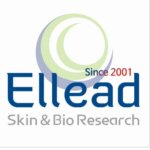
Ellead presents a total solution for skin moisturizing evaluation through in vitro and clinical tests
Sunhwa Lee
Contact: ellead@ellead.com
Discover Ellead profile and instrumentation on the Preclinical and Clinical Platforms: Ellead
There are many evaluation methods to check the moisturizing effect of the skin, and Ellead evaluates not only the skin moisture but also trans-epidermal water loss through various equipment. Raman Spectroscopy is the most powerful tool to directly evaluate skin moisture, noninvasively. Ellead evaluates the change of the water contents and natural moisturizing factor (NMF) through Raman-based hydration status analysis (Fig.1).
Fig 1. Raman-based hydration status analysis
Raman Spectroscopy is a non-destructive technique based on the scattering of light by molecules. In a Raman scattering event, part of the energy of the incoming light is transferred to a molecule, thereby excites one of the molecule’s vibrational modes. Since every molecule contributes to the overall Raman spectrum, it is a direct representation of the overall molecular composition. As such the Raman spectra can be used as highly specific spectroscopic fingerprints, that enable the identification or classification of cells and tissues. By using these principles, the main role is to measure the skin penetration of topical formulations. But also, the water content and NMF changes in the skin tissues and cells.
There is also a moisturizing evaluation method based on the principle of electrical conductivity on the skin surface and sub-surface using Corneometer®, Epsilon® and MoistureMeterD®. The results by using these methods can be expressed numerically and the effect of moisturizing can be expressed through a color scale (Fig.2).
…/…
To read the full article: click here
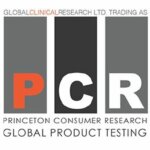
Assessment of Product Hydration Efficacy in Clinical Trials by Princeton Consumer Research
Dr. Nalini Kaul | Ph.D. Vice President Technical
Canada: elsiekohoot@princetonconsumer.com – U.K: kirstiemaguire@princetonconsumer.com – USA: lisalong@princetonconsumer.com
Discover Princeton Consumer Research profile and instrumentation on the Clinical Platform: Princeton Consumer Research
Hydration or moisture of the skin means the moisture content of the stratum corneum (SC). The hydration level of our skin helps determine whether our skin is beautiful, bright, healthy, or dry, parched, tight and rough. The epidermis is composed of different layers. At the bottom layer, known as the stratum basal, the cells divide and push already formed cells into the higher layers. As the cells move into the higher layers, they flatten and eventually die. The top layer of the epidermis, known as the stratum corneum, is made up of dead, keratinized cells that shed about every two weeks. While the amount of water in the inner layers of the skin is relatively constant, the moisture in the SC depends on different factors:
- the rate at which the water in the dermis reaches the SC
- the rate at which the water is eliminated by evaporation (Trans Epidermal Water Loss-TEWL)
- and the ability of the SC to retain water.
Our skin barrier helps prevent excessive water loss through evaporation and helps guard it from external stressors. Scrubbing, friction, or abrasion may partially or completely remove the SC and thus disrupt the skin barrier by exposing the viable and water-rich epidermis to the environment. Presence of natural moisturizing factor increases the ability of the SC to retain water. The water content of the SC is thus a delicate balance between the deeper layers of the skin and the environment. With aging, our skin is less capable of retaining moisture and as a result gets dryer. When skin gets dehydrated, the skin barrier is compromised.
*Significant changes from baseline at all time points up to 24 hour
…/…
To read the full article: click here

Skin Hydration Measurement by proderm
Stephan Bielfeldt | Director Research
Contact: AJourdren@proderm.de
Discover proderm profile and instrumentation on the Preclinical and Clinical Platforms: proderm
Measuring skin hydration in humans can be a complex process due to the nature of instruments (despite ease of use), what is being measured, and how relevant this is to the consumer. Classic methods used for measuring skin hydration rely on measuring water capacitance and/or transepidermal water loss (TEWL) using e.g., a Corneometer® or an open or closed chamber TEWL-probe. More advanced methods can provide moisture imaging or even molecular information on not only the water content in different layers of the stratum corneum, but also the state of its molecular mobility. This article aims to present two of such advanced methods.
Moisture Imaging Systems such as the Epsilon® measure the skin hydration by assessing the electrical permittivity (epsilon = di-electrical constant) or the capacitance. Moisture imaging systems have ~20 micron sensing depths that confine the measurement predominantly to the stratum corneum. The system has 76800 sensors on an area of 12.8 x 15 mm, whereas standard devices have only one. Its signal processing technology converts the non-linear sensor output into a linear and calibrated response, which then correlates highly to other di-electrical devices such as the Corneometer® values. This technique can visualize dynamic parameters of hydration e.g., in a Moisture Accumulation Test (MAT). A video is taken and shows the accumulation of water under occlusive conditions by the sensor. The Area Under the Curve (AUC) is defined as the area over the time points of measuring Epsilon® on the occluded area during the live video. The bigger the AUC the higher is the mean moisture accumulation per time.
…/…
To read the full article: Click here

Eurofins assesses skincare hydration for different ethnic skin groups
Sarah Bachir-Levy | Global Marketing Leader
Contact: cosmetics@eurofins.com
Discover Eurofins Cosmetics & Personal Care profile and instrumentation on the Clinical Platform: Eurofins
As lack of hydration can affect all skin types, it’s one of the most common concerns of consumers around the world. Several studies have been conducted to find adequate solutions, but the need for moisturizing products that are tailored to different skin groups is still a challenge.
Several past and recent overviews have demonstrated significant variabilities of quantifiable parameters between different ethnicities, such as
- skin hydration,
- TEWL,
- skin surface
- pH,
- sebum,
- water content,
- ceramide levels, and
- skin reactivity gradients,
suggesting anatomical or physiological property differences across skin groups.
As skin hydration is increasingly becoming a topic in different communities, cosmetics and personal care companies are looking to address a more diversified audience with targeted solutions and patient-specific regimens to treat lack of skin hydration. This strategy requires a different approach, whereby companies must consider different parameters in clinical trials, such as: structural and functional specifics,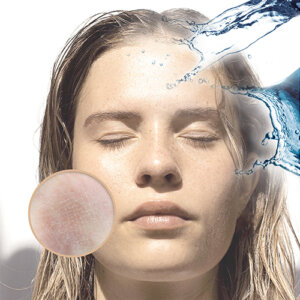
…/…
To read the full article: click here

Winter is coming!
This means that it is the perfect time to test hydrating products or moisturizerson the skin
Elisabeth Fiquet | President
Contact: efiquet@evalulab.com
Discover Evalulab profile and instrumentation on the Preclinical and Clinical Platforms: Evalulab
Brands require that their products be tested under the conditions closest to instructions of use, hence the need for representative subjects in terms of:
- ethnic groups,
- skin types (normal, dry, oily, or sensitive) and
- environmental conditions (extremely cold or hot).
Evalulab has conducted over a thousand clinical studies for over 20 years on the efficacy and safety of topical products in the coldest conditions of North America.
Winter is coming! This means that it is the perfect time to test hydrating products or moisturizers on the skin.
How do you demonstrate that a topical product hydrates?
Epidermal moisture of the stratum corneum can be assessed by non-invasive in vivo instrumental testing method based on the capacitance, an electrical property of the skin, expressed in arbitrary units via the Corneometer®.
…/…
To read the full article: Click here
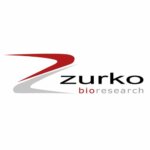
The Cornerstone of Facial Care
Sabina Giovanni | Chief Executive Officer
Contact: info@zurkoresearch.com
Discover Zurko Research profile and instrumentation on the Preclinical and Clinical Platforms: Zurko Research
The skin, as the largest organ in the body, is daily exposed to external agents that can alter its characteristics; water is essential for its proper functioning.
At present, we see more and more new and increasingly advanced claims. But the importance of guaranteeing basic aspects in our skin care routine, such as maintaining optimal hydration, should not be neglected, this optimal hydration will provide both aesthetic and functional benefits.
The stratum corneum of the skin is the outermost layer of the epidermis, and the one on which cosmetic products can have the greatest effect. As for cosmetic products, we could highlight in their composition different substances designed to improve skin hydration.
We can differentiate between moisturizing substances, which are those preparations that release water to the stratum corneum, usually solutions or emulsions of external aqueous phase. We can also find formulations aimed at forming an occlusive film to reduce transepidermal water loss, and thus prevent dehydration.
…/…
To read the full article: Click here

Hydration Measurement by Pixience
Sebastien Mangeruca | CEO
Contact: sales@pixience.com
Discover Pixience profile and instrumentation on the Clinical Platform: Pixience
French leader in digital dermoscopy, Pixience works closely with dermatologists and researchers to develop high quality products for skin and hair imaging and analysis. We strive to bring you innovative instruments that are accurate, reliable and consistent. This is the reason why 50+ dermo-cosmetic laboratories, CROs, and universities around the world have chosen our products for their product efficacy studies.
More than a mere dermoscope, C-Cube® Clinical Research – Or C-Cube CR – is the most versatile instrument for color and surface analysis, specifically designed to be used in dermatology and cosmetic clinical trials.
Its patented glossless lighting and exclusive color calibration turn each of its 10 million pixels into an actual color measurement. It also works as a handheld 3D scanner with micrometric resolution, allowing quantitative analysis of the smallest changes in microrelief. With these exclusive features, C-Cube® Clinical research can be used to evaluate a variety of product effects: anti-aging, sun protection, moisturizing, pores and seborrhea, blemish, and pigmentation, and of course, haircare.
One of the many uses of the C-Cube® CR is hydration measurement. Hydration, a fundamental characteristic of the skin, is more complex than a simple water content. Poor hydration has consequences on flaking, micro-relief, roughness and potentially inflammation.
…/…
To read the full article: Click here
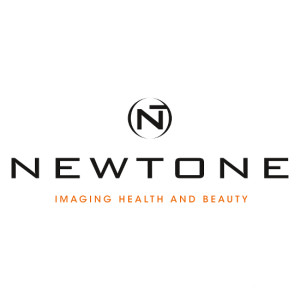
Newtone solution for nomadic or in-lab follow-up of moisturization performance using skin digital imaging & 3D surface micro-relief pattern analysis
Elodie Prestat-Marquis | C.O.O
Contact: eprestat@newtone.fr
Discovery Newtone profile and instrumentation on the Clincal Platform: Newtone
The Newtone family of solutions specializes in creating and developing increasingly powerful customized interpretation algorithms and acquisition systems, to help Cosmetic Industry to Innovate, Explore and Develop new products for all countries.
One challenge addressed by Newtone is to develop solutions enabling to measure “ground truth”: what the consumers actually see in their mirror. To help investigate moisturizing product performance, Newtone developed a specific optical solution and algorithms, for a combined approach using local visible light and 3D imaging with powerful algorithm for the analysis of skin micro-relief pattern.
Newtone portable high-resolution camera allows rapid at-contact acquisition and analysis of versatile skin features: colour and complexion, lentigos, acne, etc., but also topographic features such as wrinkles, fine lines, or roughness. Its capabilities have now been evaluated for several years, either under nomadic conditions (by the consumer, at home, under real conditions of life), or under controlled conditions, by a technician, at the clinical lab.
NEWTONE. Poster Microrelief & Hydration 70×100 HD (2)
…/…
To read the full article: Click here
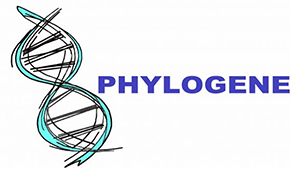
D-Squame with “PAC and iST” techniques for skin proteomics, to characterize skin barrier function and superficial inflammation
Gilbert Skorski – CEO | Romuald Arnaud – Business Development Manager
Contact: r.arnaud@phylogene.com
Discover Phylogene profile and instrumentation on the Preclinical Platform: Phylogene
The skin is a barrier membrane that separates environments with profoundly different water contents. Barrier properties are assured by the outer layer of the skin, the stratum corneum (SC), which controls the transepidermal water loss (TEWL). The glandular nature of the skin and its bacteria / fungi composition is
making it prone to lipids metabolism and salts secretions as well, affecting TEWL.
Even though the microbiome role in inflammation / infection is currently subject to intensive research, its implication in lipids metabolism and thus TEWL is also to consider. Metaproteomic analysis are well suited for taxa’s ecosystem characterization and elucidate functional interactions between skin and its microbiota.
Several sample types are available for dermo-cosmetic studies (reconstructed skin, skin explants, strips, swabbs), but non-invasive techniques on patient cohorts remain the ones of choice since they allow replicas, more flexible studies design and overall, a direct work on the stratum corneum.
…/…
To read the full article: Click here

Capture Water with Natural Moisturizing Factor
Rachida Nachat-Kappes, PhD, Cell and Skin Biologist, Scientific Consultancy, Education
Contact: rachida@innovskin.com
Access free online MasterClass in French « Comprendre la peau et ses besoins » : https://formation.innovskin.com/registration
Imagine suddenly being teleported from a humid tropical zone to a desert where drought reigns! Well, that’s what happens to our epidermis. While the deep “living” layers contain around 65% water, this rate drops to only 15 to 20% in the most superficial part of the horny layer, the stratum disjunctum, made up of the accumulation of dead anucleated cells, the corneocytes, resulting from the keratinocyte terminal differentiation programme. As the boundary with our environment, the stratum corneum (SC) was for a long time considered as a simple inert interface, lifeless and therefore of little use.
The continuous evolution in the understanding of the physiopathology of cutaneous disorders has highlighted the vital barrier functions that it provides. The barrier properties of the SC involve the formation of a rigid protein shell, the cornified envelope; inter-corneocyte lipids and their lamellar structural organization; but also, a mixture of small molecules called Natural Moisturizing Factor (NMF).
…/…
To read the full article: click here
CIDP has developed ex vivo and in vivo methodologies to determine the efficacy of moisturizing products
Florence FOURNIER | Client Relationship
Contact: f.fournier@cidp-cro.com
Discover CIDP profile and instrumentation on the Preclinical and Clinical Platforms: CIDP
Skin hydration plays an essential role for the barrier function of the skin and helps to shield from exposome such as pollution, ultraviolet radiation and prevent microbial contamination on the inside of the body. A hydrated skin physically limits water loss and prevents evaporation of essential ions and amino acids. Moisturizing skin care occupies a major segment of the cosmetics and Skin care market. CIDP, leader in dermatological testing, has developed several ex vivo and in vivo methodologies to determine the efficacy of moisturising products. Ex vivo, human skin explants can be used where biological markers implicated in cellular cohesion and cell-cell junctions can be monitored. This includes biomarkers such as Claudin-I, Occluding-I, Integrin and Collagen. Lipid synthesis as well as the epidermal differentiation and extracellular matrix synthesis can also be evaluated to determine the hydrating effect of a cosmetic product.
Happy Reading !
Skinobs Team

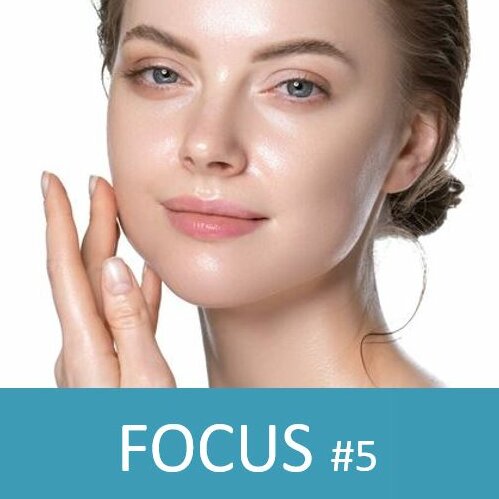

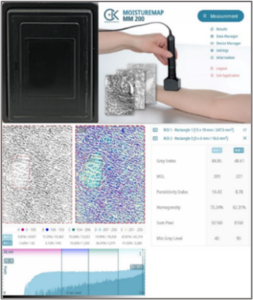
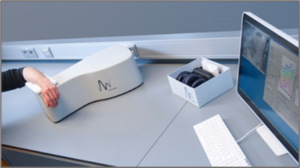
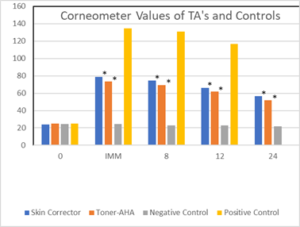
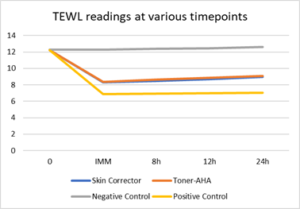
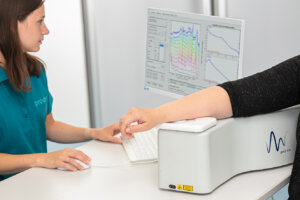

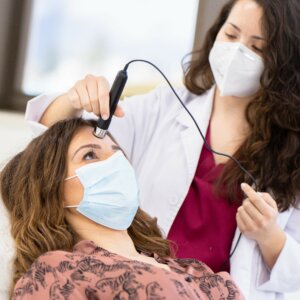
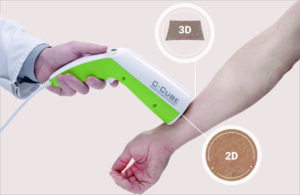
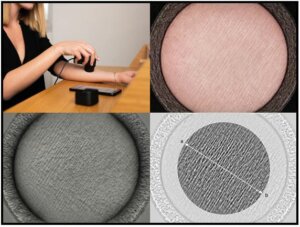
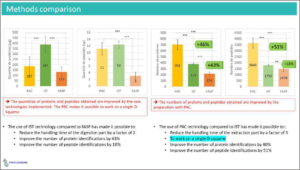
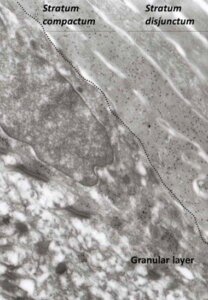
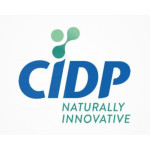
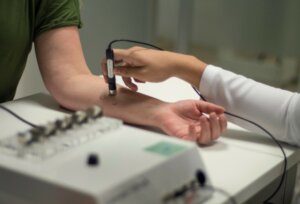
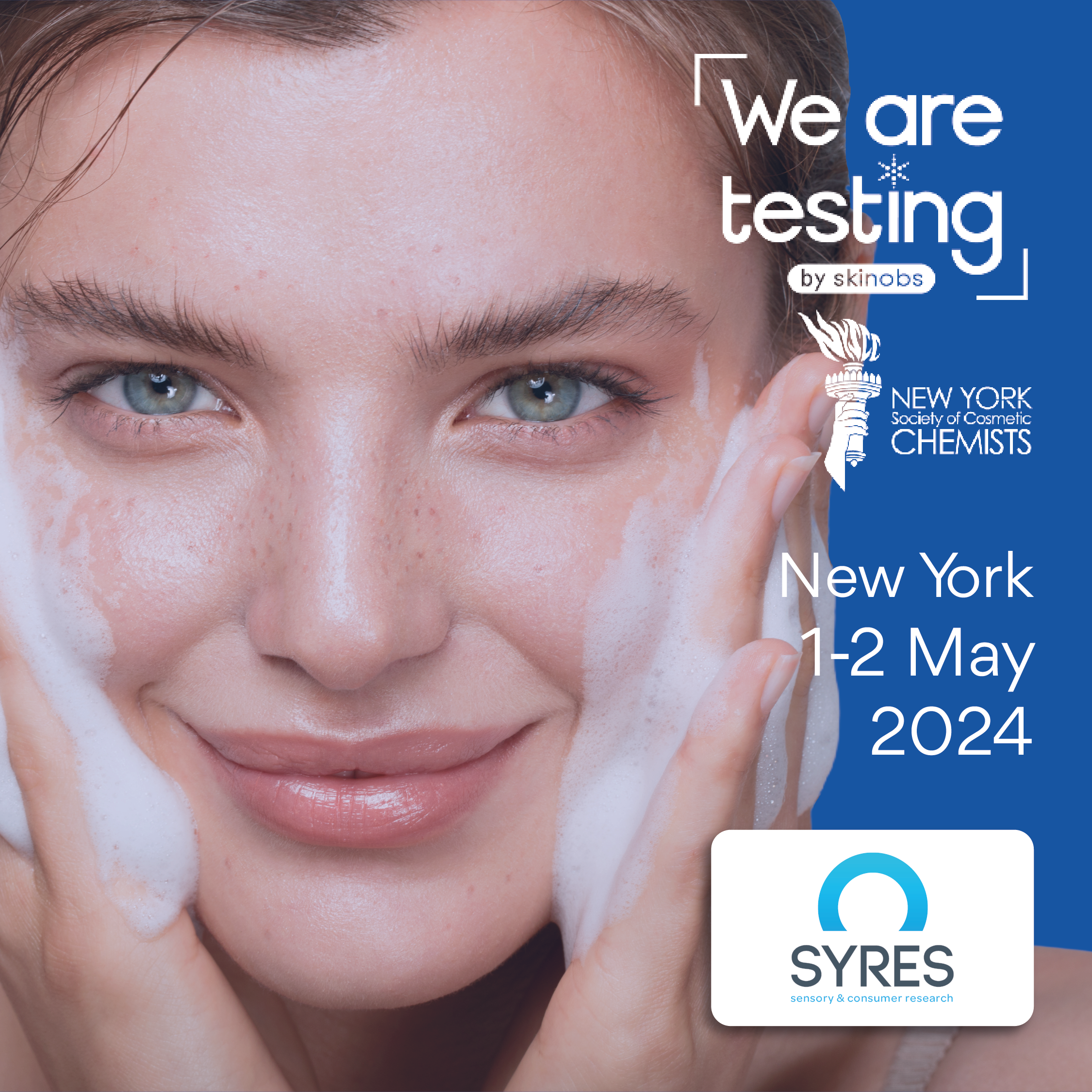
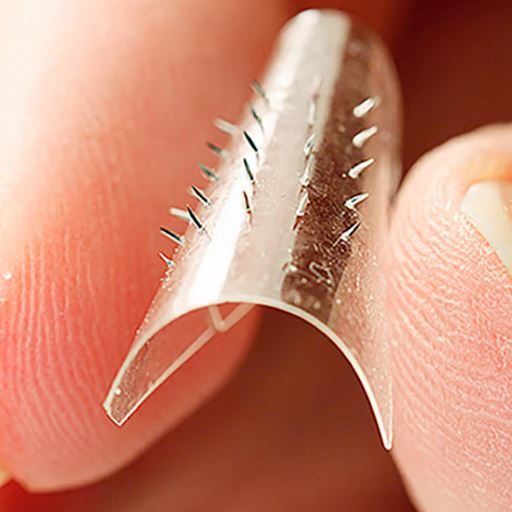





 Follow us on Linkedin!
Follow us on Linkedin!
You must be logged in to post a comment.